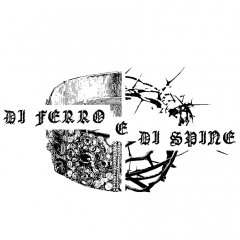The intention was to launch this new project on Monday the 18th but I must have been wrong because it left before schedule Well, no…
“In the twilight years bridging the fall of the Roman Empire and the dawn of the Second Imperium, an era steeped in pestilence, chaos, and…
Read more on the Kickstarter page. East of the city of Mutina, described in the recent IT03 “Dead Skin Masks,” lies the rival Guelph papal…
Greetings dear backers and visitors! This month has been very intense in the development of the world of Of Iron & Thorns. Dead Skin Masks…
A warm thank you to everyone who is donating confidence to the project. These days I am writing a four-handed OSR ruleset to give Of…
Better believe it, I have finally finished the short module and am uploading the reward now for the fantastic supporters who funded this humble project.…
The fourth of the main iconics of this setting is Erasmus, representing the erudite mind of someone who is skilled in all the arts of…
The introduction to the iconic characters continues with Theobald, cleric. The Church, in the world of Of Iron & Thorns is one and indivisible. After…
The introduction to the iconic characters continues with Corio, a member of a primitive race of cannibals punished by God for their distance from the…
The first of the iconic characters to be unveiled in the coming weeks in anticipation of the release of the Kickstarter module is Floramonda Malvasia.…
